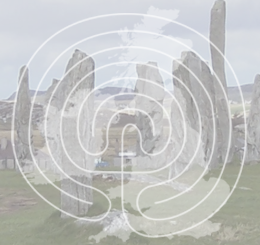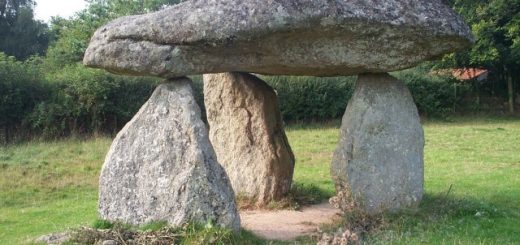Dunadd
The ancient king seat of Dunadd – capital of the kingdom of Dalraidia (Dal Riata) – rises out of the barren flatness of Crinan Moss, the raised bog floodplain of the meandering River Add. This rocky outcrop was the power base of the Scotti tribe, who invaded from Ireland around the 5th century AD. The tribe were eventually to give Scotland its name, and evidence suggests a rich cultural heritage of fine craftsmanship and trading throughout Dark Age Europe.
 Archaeological excavations show that there has been a fort on this site from the Iron Age period, but the site is most famous as being the stronghold of the Scotti tribe and centre of the Kingdom of Dalradia (Dal Riata). The Scotti tribe were invaders from Ireland in the 5th and 6th centuries AD, their culture flowering between 6th and 10th centuries AD.
Archaeological excavations show that there has been a fort on this site from the Iron Age period, but the site is most famous as being the stronghold of the Scotti tribe and centre of the Kingdom of Dalradia (Dal Riata). The Scotti tribe were invaders from Ireland in the 5th and 6th centuries AD, their culture flowering between 6th and 10th centuries AD.
Archaeological evidence points to Dunnad as a key power base and trading centre, as potshards have been discovered which originate from mainland Europe. It seems that they were also in contact with other centres of power most notable those in Northumberland. It has been suggested that Dunadd may have been the “head of the region” described in Adomnan’s Life of Columbus, where the saint met sailors who hailed from Gaul. Finds also show that the population were in contact with the Christian centre at Iona.
 Traces of precious metal debris has led historians to conclude that there was an important metal smiths workshop within the fortress, probably producing fine jewellery for the elite tribe members, as well as trade goods and weaponry. Among the various archaeological finds were many moulds for elaborate jewellery and a number of smelting crucibles.
Traces of precious metal debris has led historians to conclude that there was an important metal smiths workshop within the fortress, probably producing fine jewellery for the elite tribe members, as well as trade goods and weaponry. Among the various archaeological finds were many moulds for elaborate jewellery and a number of smelting crucibles.
The site must have been well fortified during its occupation, consisting of a number of terraces reinforced with dry stone walling, which would have been surmounted with timber palisades. The first terrace is guarded by a narrow cleft between the rocks, which would have been easy to guard when reinforced with timber. It is likely that terraced forts such as Dunadd, were separated into levels according to social rank and status, with the chief or lord living on the top level in the enclosed Citadel.
 One of the most interesting features about the site are the series of carvings on the exposed rock on the lower summit plateaux. These include a faded image of a boar, a shallow round depression in which water collects, and a small-carved footprint.
One of the most interesting features about the site are the series of carvings on the exposed rock on the lower summit plateaux. These include a faded image of a boar, a shallow round depression in which water collects, and a small-carved footprint.
There are also a series of undecipherable ogham scripts running along two of the split bedding planes and cracks that dissect the rock. The real purpose of all these carving is unknown, but we can assume that they were used during inauguration ceremonies of kingship in pagan times, which may have carried over into the Christian period. Stone carvings are difficult to date, possibly even dating as far back as the Iron Age when the fort was first in use.
 According to local legend the Celtic hero Ossian left the footprint, when he strode across the hilltops from Rhudil to Dunnadd.
According to local legend the Celtic hero Ossian left the footprint, when he strode across the hilltops from Rhudil to Dunnadd.
Directions: Signposted off the A816 three and a half miles South from Kilmartin.




Recent Comments